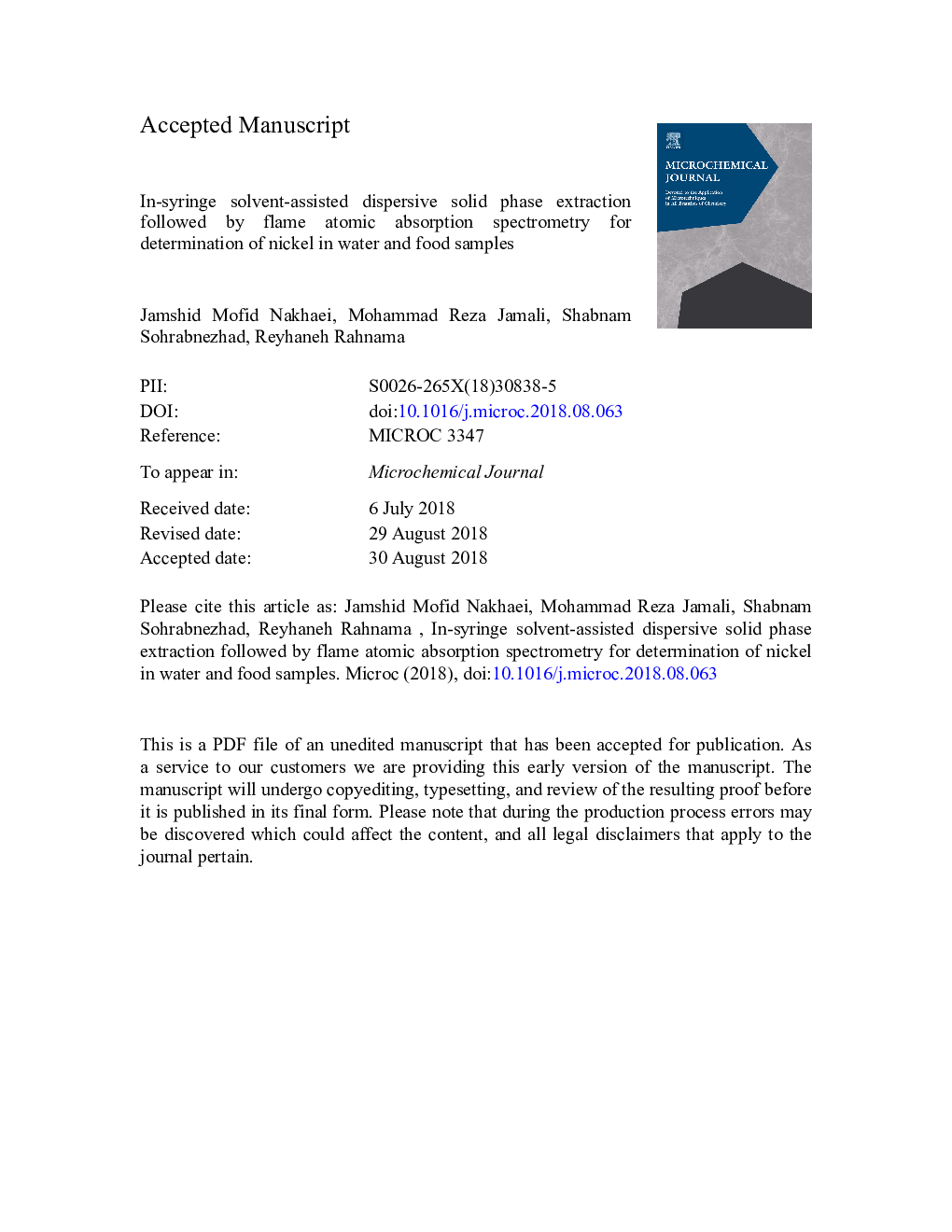| Article ID | Journal | Published Year | Pages | File Type |
|---|---|---|---|---|
| 10140917 | Microchemical Journal | 2019 | 30 Pages |
Abstract
This study presents a new in-syringe solvent-assisted dispersive solid phase extraction (ISSADSPE) method for determination of nickel ions in water and food. The method involved dispersion of a few milligrams of sorbent in the sample solution inside the barrel of a syringe through application of a disperser solvent. In less than 1â¯min, the extraction equilibrium was achieved due to dispersion of the sorbent and high mass transfer rate. Afterwards, syringe membrane was employed to separate the dispersed sorbent from the solution. Then the ethanol was withdrawn by syringe membrane to dissolve the analyte-enriched sorbent. Flame atomic absorption spectroscopy was applied to assess the obtained extract. Effective factors such as the sorbent nature and amount, sample volume, pH, ligand concentration, type and volume of disperser solvent and eluent, ionic strength and extraction time were evaluated and optimized to improve the extraction efficiency. Under optimized conditions (pHâ¯=â¯8.0, ligand concentrationâ¯=â¯2.0â¯Ãâ¯10â4, sorbentâ¯=â¯10â¯mg of benzophenone, disperser solvent 500â¯Î¼L of ethanol), the limit of detection and quantification were found to be 0.7â¯Î¼gâ¯Lâ1 and 2.0â¯Î¼gâ¯Lâ1, respectively. The calibration curve kept its linearity from 2 to150â¯Î¼gâ¯Lâ1, with the square correlation coefficient of 0.997. The relative standard deviation was measured as 2.5% while the enrichment factor was assessed as 50. The proposed method was successfully applied for determination of nickel in environmental water, spinach and celery samples, with recovery range of 97-101%.
Related Topics
Physical Sciences and Engineering
Chemistry
Analytical Chemistry
Authors
Jamshid Mofid Nakhaei, Mohammad Reza Jamali, Shabnam Sohrabnezhad, Reyhaneh Rahnama,
